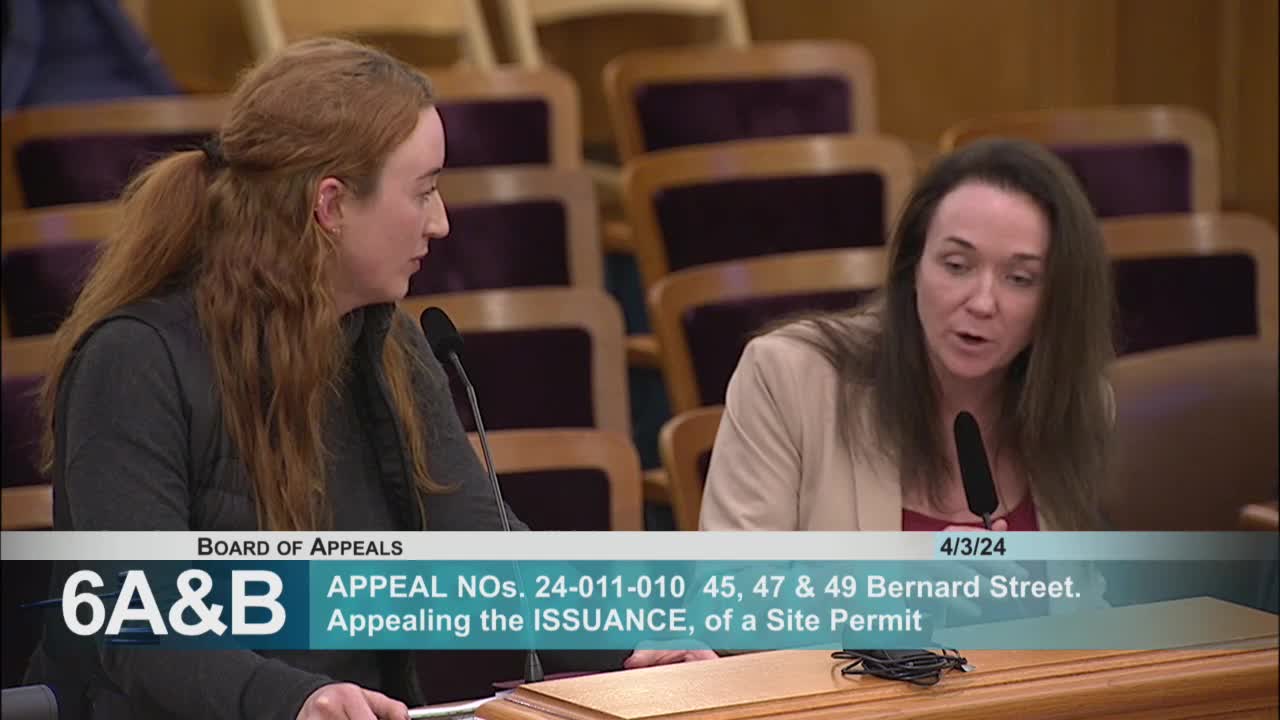Zoning Administrator Teague addresses UDU permit confusion during planning commission meeting
April 03, 2024 | San Francisco City, San Francisco County, California

This article was created by AI summarizing key points discussed. AI makes mistakes, so for full details and context, please refer to the video of the full meeting. Please report any errors so we can fix them. Report an error »

In a recent San Francisco government meeting, significant discussions centered around the complexities of property ownership and housing regulations, particularly regarding the potential conversion of a basement unit into an Accessory Dwelling Unit (ADU). The meeting highlighted the ongoing confusion surrounding the history of occupancy in the property located at 45 A, where conflicting testimonies about past residents have raised questions about its legal status.
Commissioner Swig expressed concerns about the validity of an affidavit presented during the meeting, which claimed that mail had been received at the property. This raised doubts about whether the basement unit had ever been legally occupied, as the physical layout of the property, including the absence of a kitchen window in the basement, contradicted some of the claims made by previous occupants. The discussion underscored the need for clarity in determining whether the basement unit qualifies as a "Unit of Dwelling" (UDU), a designation that would affect its future use and potential conversion to an ADU.
Corey Teague, the zoning administrator from the planning department, emphasized that the determination of whether a UDU exists is not at the discretion of the property owner but is a decision made by the zoning administrator. He assured the commissioners that the planning department would address the UDU issue as part of the permitting process, which is crucial for any future renovations aimed at making the basement habitable.
The meeting also touched on the broader implications of maintaining housing stock in San Francisco. Commissioner Swig reflected on past injustices related to housing displacement, advocating for the preservation of existing units to combat homelessness and ensure that all habitable spaces are utilized effectively.
As the planning department prepares to make a final determination on the UDU status, stakeholders await clarity on how these decisions will impact the ongoing housing crisis in the city. The outcome of this discussion could influence future housing policies and the management of residential properties in San Francisco, highlighting the delicate balance between development and community needs.
Commissioner Swig expressed concerns about the validity of an affidavit presented during the meeting, which claimed that mail had been received at the property. This raised doubts about whether the basement unit had ever been legally occupied, as the physical layout of the property, including the absence of a kitchen window in the basement, contradicted some of the claims made by previous occupants. The discussion underscored the need for clarity in determining whether the basement unit qualifies as a "Unit of Dwelling" (UDU), a designation that would affect its future use and potential conversion to an ADU.
Corey Teague, the zoning administrator from the planning department, emphasized that the determination of whether a UDU exists is not at the discretion of the property owner but is a decision made by the zoning administrator. He assured the commissioners that the planning department would address the UDU issue as part of the permitting process, which is crucial for any future renovations aimed at making the basement habitable.
The meeting also touched on the broader implications of maintaining housing stock in San Francisco. Commissioner Swig reflected on past injustices related to housing displacement, advocating for the preservation of existing units to combat homelessness and ensure that all habitable spaces are utilized effectively.
As the planning department prepares to make a final determination on the UDU status, stakeholders await clarity on how these decisions will impact the ongoing housing crisis in the city. The outcome of this discussion could influence future housing policies and the management of residential properties in San Francisco, highlighting the delicate balance between development and community needs.
View full meeting
This article is based on a recent meeting—watch the full video and explore the complete transcript for deeper insights into the discussion.
View full meeting
